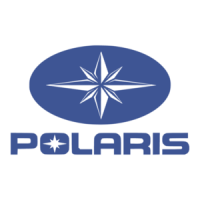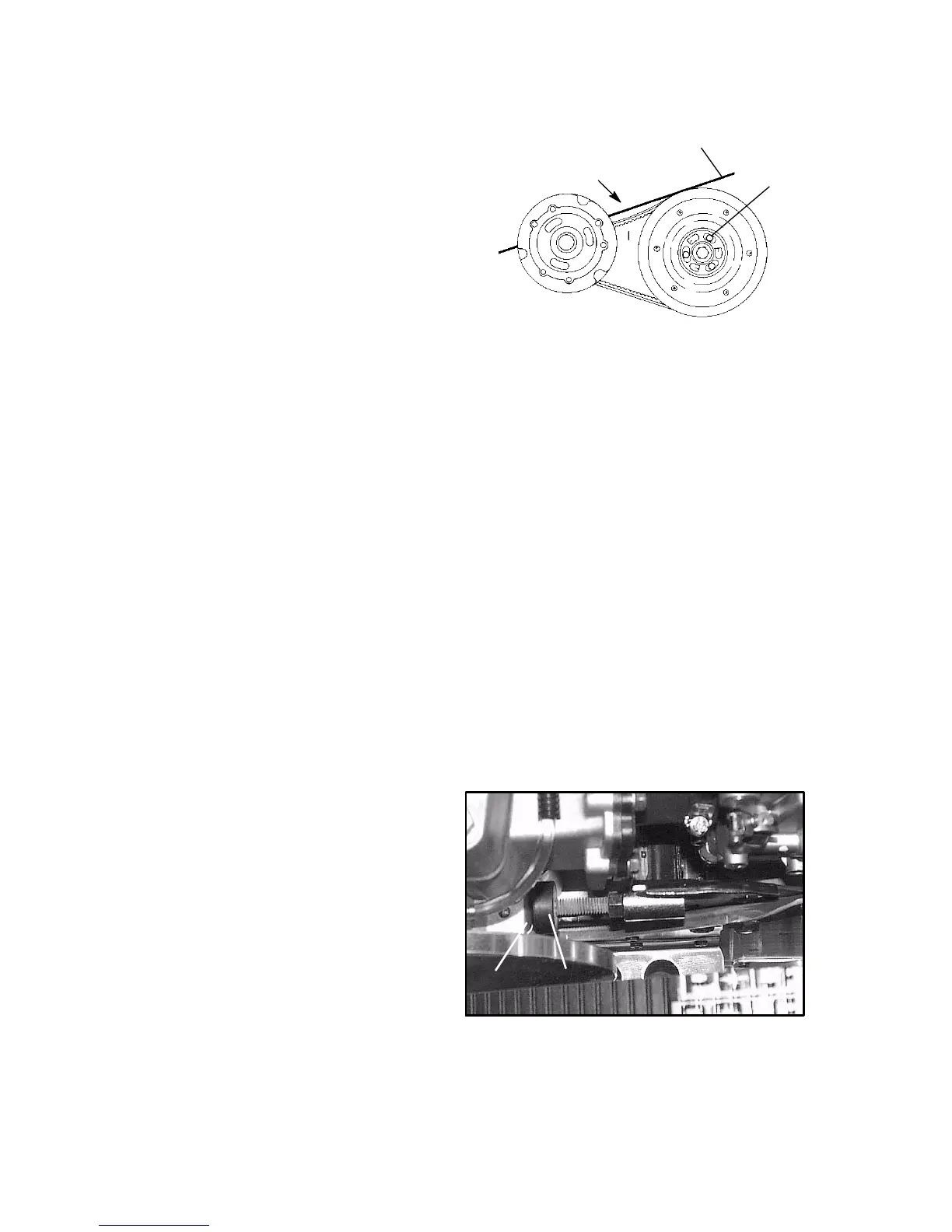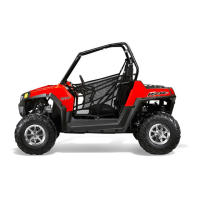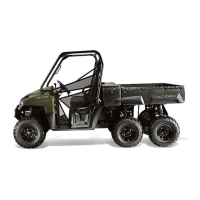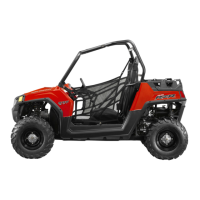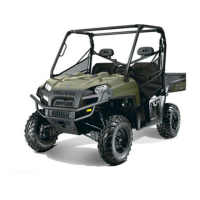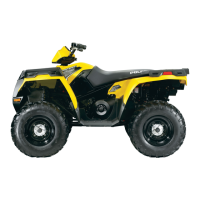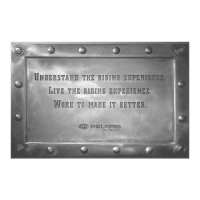98
MAINTENANCE
Clutch System
Drive Belt Deflection
Measure belt deflection with both
clutches at rest and in their full
neutral position.
Place a straight edge on the belt (A)
and apply downward pressure while
measuring at point B. This
measurement should be 1 1/4”.
Drive Belt Adjustment
1. Loosen the 7/6” jam nut on the belt width adjuster.
2. Using a 1/8” Allen wrench, adjust the threaded set screw (C) as
needed. NOTE: Turn the set screw in (clockwise) to increase the
distance between the sheaves and out (counterclockwise) to
decrease the distance.
3. Tighten the jam nut.
Clutch Center Distance
See your Owner’s Manual Supplement for recommended center
distance for your machine. If adjustment is necessary, see your dealer.
Due to tolerances in belt length, it may be necessary for your dealer to
make minor adjustments in the driven clutch to achieve correct belt
tension.
Torque Stop
If your snowmobile is equipped
with an engine torque stop (1),
peri odically check torque stop
clearance. With clutches in
proper alignment, the torque stop
clearance should be a minimum
of .010″ to a maximum of .030″
from the engine case (2). Adjust
if necessary, and lock the jam
nut.
A
B
C
2 1
